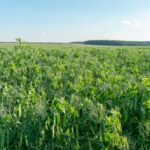Integrated farming systems (IFS) offer South African farmers a sustainable approach to agriculture by combining crop production, livestock rearing, and other farming practices into a unified system. While IFS can increase productivity and reduce risks, many farmers encounter challenges that hinder success. Below, we explore ten common mistakes in integrated farming systems and how to avoid them.
1. Poor Planning and Design
Many farmers jump into IFS without a comprehensive plan, leading to inefficiencies. Without considering factors like farm size, climate, soil type, and water availability, farmers risk creating incompatible systems.
Solution: Develop a clear plan with the help of agricultural experts, focusing on the synergy between components like crops, livestock, and aquaculture.
2. Inadequate Resource Allocation
Failing to allocate resources such as land, labor, and finances effectively can result in overutilization or underutilization of certain components. For example, devoting too much land to livestock can starve crops of space.
Solution: Balance resource allocation based on the needs of each component and prioritize efficient use of resources.
3. Ignoring Soil Health
Integrated systems rely heavily on soil fertility, yet some farmers neglect soil testing and management. Degraded or nutrient-depleted soil affects both crop yields and forage quality for livestock.
Solution: Conduct regular soil tests and implement practices like crop rotation, composting, and organic fertilization to maintain soil health.
4. Overstocking Livestock
Overstocking is a common issue where farmers keep more animals than their land can support. This leads to overgrazing, soil erosion, and reduced productivity.
Solution: Determine the carrying capacity of your land and manage livestock numbers accordingly.
5. Lack of Water Management
Water is critical in IFS, yet some farmers fail to establish efficient water systems. Poor irrigation can lead to waterlogging or drought stress, while insufficient water points for livestock can cause animal stress.
Solution: Invest in water-saving techniques like drip irrigation and rainwater harvesting, and ensure adequate water distribution for livestock.
6. Neglecting Market Research
Farmers often focus solely on production without considering market demands, leading to overproduction of certain goods and underproduction of others.
Solution: Conduct thorough market research to understand consumer preferences and tailor your production to meet market demands.
7. Failure to Diversify Adequately
While integration is about combining systems, over-reliance on one component can still occur. For instance, focusing excessively on poultry while neglecting crop diversity undermines the benefits of integration.
Solution: Diversify your farm components to include multiple complementary systems, such as crops, livestock, and aquaculture.
8. Insufficient Training and Knowledge
Integrated farming requires specialized knowledge, yet many farmers rely on trial and error, leading to costly mistakes.
Solution: Attend workshops, training sessions, and seek mentorship from successful integrated farmers or agricultural extension officers.
9. Ignoring Pest and Disease Management
The interconnectedness of IFS means pests and diseases can spread quickly across components, affecting the entire system.
Solution: Implement integrated pest management (IPM) practices and establish biosecurity measures to minimize disease risks.
10. Overlooking Record Keeping
Many farmers neglect record-keeping, which is essential for monitoring progress, identifying trends, and making informed decisions.
Solution: Keep detailed records of inputs, outputs, expenses, and yields. Use digital tools or apps to simplify record management.
Integrated farming systems hold immense potential for South African farmers, offering economic and environmental benefits. However, success depends on avoiding these common mistakes. By planning carefully, managing resources effectively, and continually educating themselves, farmers can create thriving, sustainable farming systems that meet the demands of today’s agricultural landscape.
Join 'Farmers Mag' WhatsApp Channel
Get the latest Farming news and tips delivered straight to your WhatsApp
CLICK HERE TO JOIN






